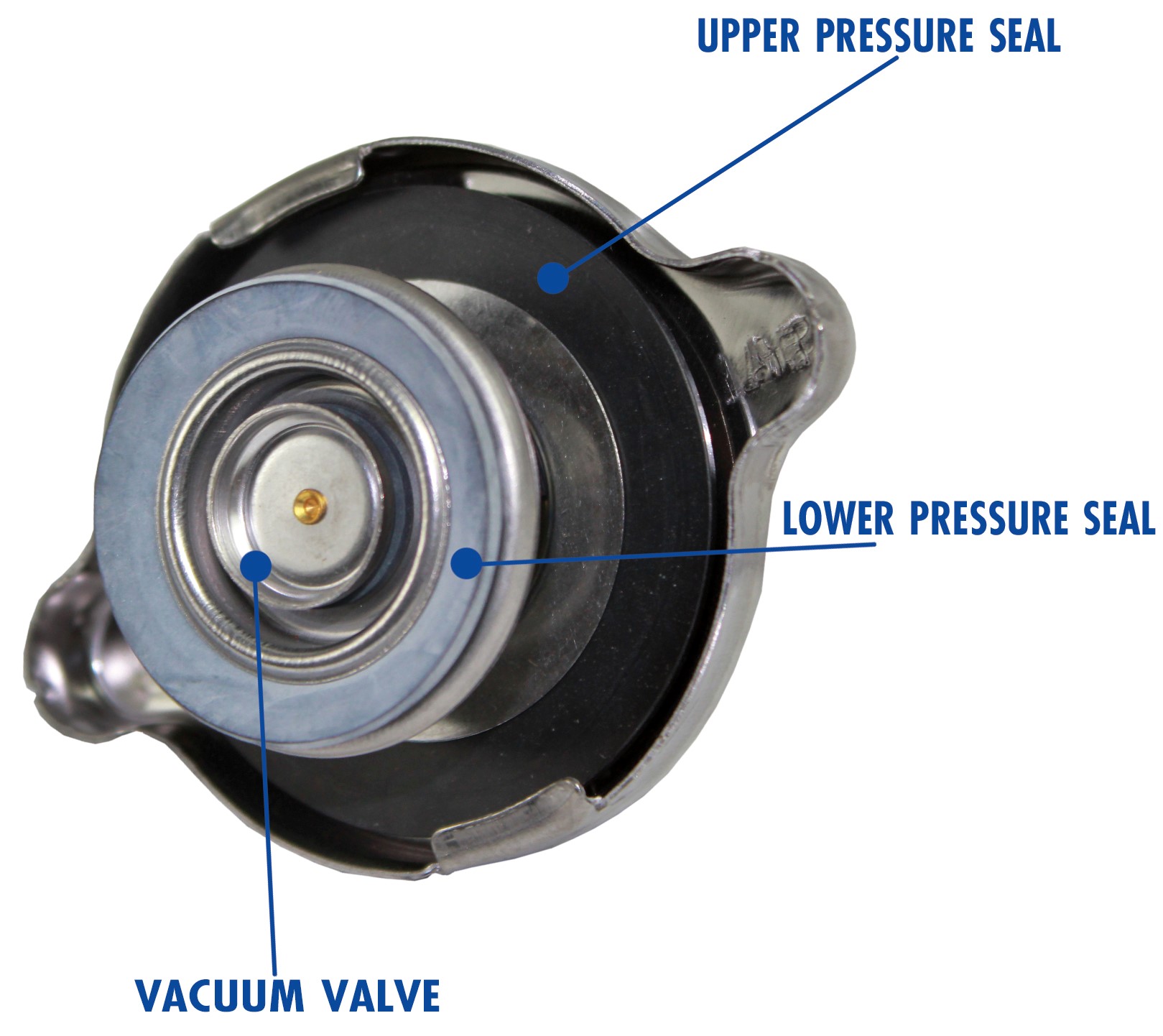A Radiator Cap Serves Many Purposes
- A radiator cap keeps the cooling system pressured which raises the boiling point. For every pound of pressure in a closed cooling system you raise the boiling point by three degrees. At sea level, water boils at 212 degrees. By adding 16 pounds of pressure to the system you will raise the boiling point to 260 degrees. This will guard against any “boil off” of coolants.
- When coolant heats up it expands, or increases in volume, creating more pressure in the cooling system. Once the cooling system reaches the caps rated pressure, the pressure spring compresses and allows coolant to flow into the reservoir tank. This process allows for the expansion of the coolant while keeping the cooling system at the proper operating pressure.
- The radiator cap also has a vacuum valve that allows coolant to flow from the reservoir tank to the radiator during cool down. When the coolant temperature drops, the coolant will contract and create a vacuum. At this time, the vacuum valve opens and draws coolant from the reservoir tank back into the radiator; bringing it to the proper level.
- The radiator cap seals the cooling system preventing any air to enter the system. Air is the #1 enemy to all cooling systems. You cannot sustain a proper operating temperature with air in the cooling system. Air in the system will result in overheating.

The radiator cap is the least expensive and most overlooked part in your cooling system. If you experience any of the issues we just discussed, the first thing to do is get a new cap. Also, whenever you replace a radiator you should always get a new cap.
